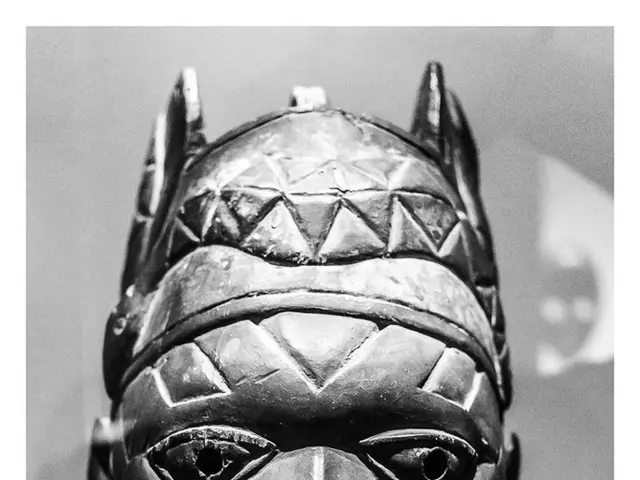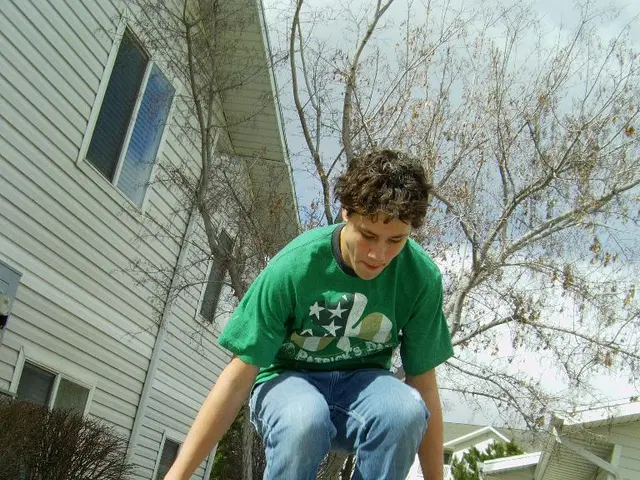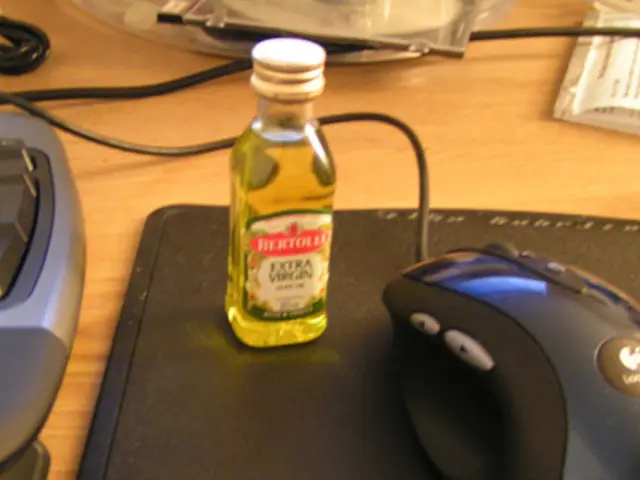Insights into Psoriatic Arthritis: Identifying Its Five Distinct Variants
Unshackling the Secretive Symphony of Psoriatic Arthritis
Hey there! Psoriatic arthritis (PsA) is often a dance between psoriasis and joint swell, but they ain't the same beat. Psoriasis, you know – that chronic skin condition marked by red, scaling Patches? PsA comes with joint pain, and sometimes it's a stage shared, sometimes it ain't.
Now, if you're feeling creaks and pops in your joints, it helps to know if it's PsA type you're dealing with so you can get the right tunes to play. Let's wrap our heads around the five primary types and their ballets of symptoms and remedies.
Stomp those Steps: Get the Lowdown on Psoriatic Arthritis Kinds
PsA is a form of arthritis that pains about 20 to 30% of those sportin' psoriasis. Here they are, from the most popular to the rarest:
- Asymmetric PsA
- Symmetric PsA
- Distal Interphalangeal Predominant (DIP) PsA
- Spondylitis PsA
- Psoriatic Arthritis Mutilans
Bear in mind that doctors factor in all symptoms while discovering the dance floor you're treading on. Now, let's dip our toes into those types and their attraction moves.
Asymmetric PsA – Stirs the Pot
Asymmetric PsA looms large amongst PsA types, claiming at least 60% of the waltz. This pick-and-choose number game makes your joints to tango apart rather than synchronize, meaning right hands might burn while left hands stay untouched. Then again, it ain't uncommon for tango partners like left knees and right feet to hit the floor together. A 2019 study finds this dance more common in gentlemen.
Spot the Symptoms
- Sapped energy – feeling like an exhausted marionette
- Muddled vision
- Swollen necks or toes, accompanied by pitting or cracking nails
- Joints stiffened, aching, or throbbing with pain
- Ligaments or tendons beyond themselves
Stick a Forward and Get Medicated
PsA don't have a ticket to cureville, but there are ways to lead the waltz around its symptoms. Doctor's guidance plays a vital role in weighing the best cheek-to-cheek steps for you:
- Physical therapy
- Occupational therapy
- Oral corticosteroids (like prednisone)
- Biologic drugs (like adalimumab or etanercept)
- Nonsteroidal anti-inflammatory drugs (NSAIDS) like aspirin or ibuprofen
- Intra-articular joint injections
Symmetric PsA – Steps Together
Symmetric PsA is just like the name suggests – partners repeat steps the same way on each side. Doctor's Windows show this type playing home to 15 to 61% of all PsA cases, with ladies in the lead*.
Find the Familiar Flavors
Symmetric PsA croons the same tunes as its Asymmetric partner, but it usually loudeness the band on fingers and toes. It's sometimes mistaken for rheumatoid arthritis, but a simple blood test will lock down a correct diagnosis.
Engage the Orchestra
The treatments for Symmetric PsA keep quite similar to her Asymmetric sister – tailor-made to suit age, weight, movement, pain levels, and overall health.
PsA Loft: Smokes add fuel to PsA's inferno, possibly marring treatment success and worsening pain levels.
Distal Interphalangeal Predominant (DIP) PsA – Dance to a Different Beat
An estimated 10% of PsA driven dancers step in a falsetto, beelining for the DIP joints nestled deep within the toes and fingers.
Pinpoint the Performances
- Swollen legs or toes
- Severe ligament or tendon pangs
- Decreased joint flexibility
- Stiff joints
** act two, Scene two: The Struggle**
DIP PsA live may look for nonsteroidal anti-inflammatory drugs (NSAIDs) or corticosteroid injections to temper inflammation and soothe pain. More serious cases might require tumor necrosis factor (TNF) inhibitors, but expectations must be tempered – the jury's still out on how revolutionary this ballet will be.
Lights, Camera, Solutions!
Wandering hands and feet might find relief through a bit of DIY charm:
- Ice it out: An icepack, applied for up to 10 minutes can cool that inflammation down.
- Cuticle Care: Keep those nails primped with oil to keep irritation at bay.
- Submerge yourself: A warm – not long – foot bath can do wonders for those tired tootsies.
- Dress in wicking fabrics: Moisture-wicking socks should whisk sweat from your skin.
But don't be shy – always double-check with that dancing doc before breaking out your moves!
Spondylitis PsA – Feeling Joint Pain in Your Back
Around 7 to 32% of PsA dancers find themselves tangoing amongst their vertebrae and sacroiliac joints**.
Detect the Symptoms
Spondylitis PsA's whispers include chronic neck and back pain, stiffness, and swelling, with potential overtures in feet, hips, arms, legs, and even hands**.
Woo the Crowd
According to the Spondylitis Association of America, Spondylitis treatments include NSAIDs, physical therapy, immunosuppressants, sulfasalazine, biologic medications (like TNF inhibitors), and disease-modifying antirheumatic drugs (DMARDs).
PsA Mutilans – The Rare One
PsA mutilans paints the ballet floor with all manner of joint destruction, affecting just about 5% of PsA dancers. This severe reaction typically rounds up in hands, feet, or wrists**.
Locate the Loss
Dramatic inflammation may kiss goodbye theractors – rendering them damaged, short, and impervious to extension. Other symptoms include pain radiating from these charred joints, creeping into other regions**.
Set the Stage
PsA mutilans scorches the dance floor progressively, meaning it'll keep getting worse and worse without proper treatment. Treatment choices include anti-TNF inhibitors, DMARDs, biologic medications, and possible surgical intervention for joint reconstruction or pain relief**.
The Encore
PsA is a shimmering dance between arthritis and psoriasis, with numerous variations for every performer. Tailored treatments and early detection are the calling cards to stealing the show on this illuminated stage, but remember – your doc plays the most vital part in getting the ball rolling! Wishing you all fantastic footwork!
Source: 2019 study, Spondylitis Association of America, Enrichment Data
- Psoriatic arthritis (PsA) is a dance between psoriasis and joint swell, but they aren't the same beat, as PsA comes with joint pain and sometimes it's a shared stage with psoriasis.
- PsA is a form of arthritis that afflicts about 20 to 30% of people with psoriasis, and there are five primary types: Asymmetric PsA, Symmetric PsA, Distal Interphalangeal Predominant (DIP) PsA, Spondylitis PsA, and Psoriatic Arthritis Mutilans.
- Asymmetric PsA looms large among PsA types, affecting at least 60% of cases, causing joints to tango independently rather than synchronize, and more commonly affecting gentlemen.
- Joints stiffness, swelling, and throbbing pain, sapped energy, muddled vision, swollen necks or toes with pitting or cracking nails, and ligaments or tendons beyond themselves are the common symptoms of PsA.
- The treatments for PsA include physical therapy, occupational therapy, oral corticosteroids, biologic drugs, nonsteroidal anti-inflammatory drugs (NSAIDS), intra-articular joint injections, and smokes adding fuel to PsA's inferno, possibly marring treatment success and worsening pain levels.
- Symmetric PsA is considered to play home to 15 to 61% of all PsA cases, with ladies in the lead, and treatments keep quite similar to her Asymmetric sister.
- Distal Interphalangeal Predominant (DIP) PsA affects about 10% of PsA dancers, beelining for the DIP joints nestled deep within the toes and fingers, looking for relief through NSAIDs, corticosteroid injections, and TNF inhibitors.
- PsA Mutilans affects just about 5% of PsA dancers, causing dramatic inflammation, resulting in joint damage, immobility, and sometimes requiring surgical intervention for joint reconstruction or pain relief.








